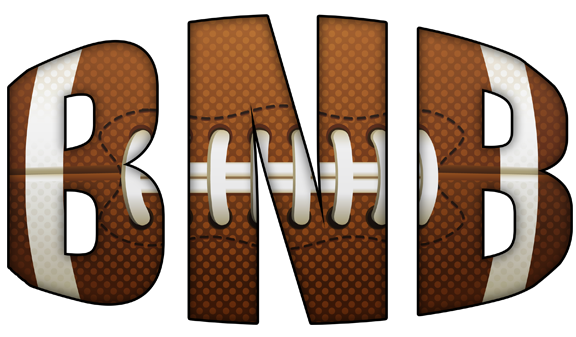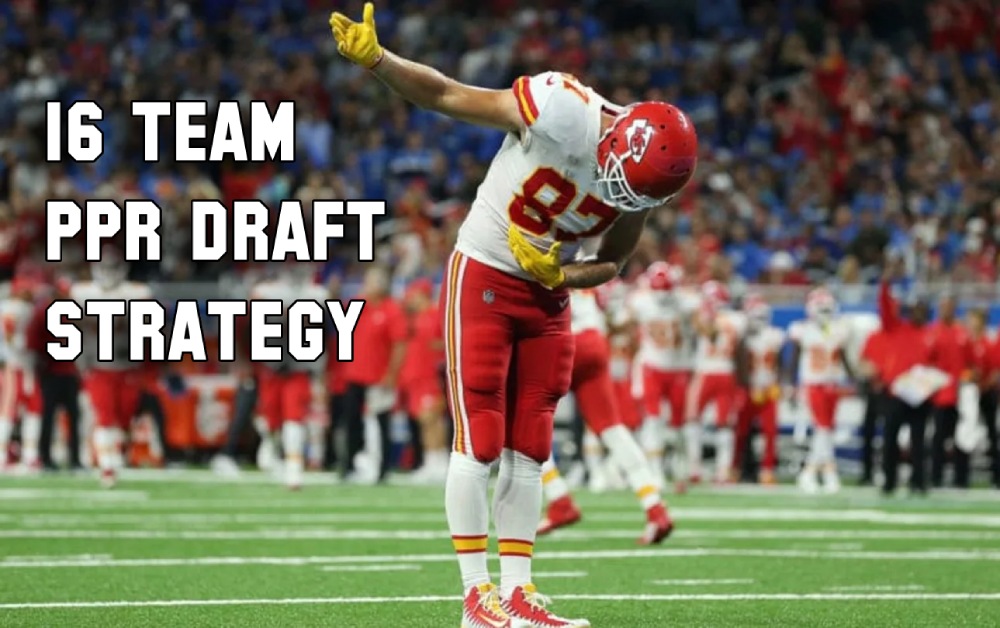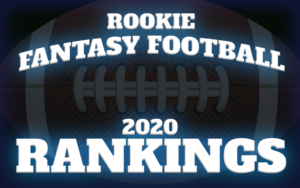If your fantasy football league is running a 16 team PPR format, you will need a refined draft strategy to make sure you get the most out of your draft.
16 team draft formats are especially difficult because the player pool thins out very quick. If you don’t end up with the players you want, there will be very little help from the available free agents.
This guide will take you through everything you need to know before and during your draft.
Background Information
Know Your League Settings
The first thing to do is understand your league’s settings.
If you’re reading this article, presumably you’re running a 16 team PPR fantasy league. But there may be more nuance to the league settings.
Before your draft, look for these fantasy league settings to inform your draft strategy:
- Scoring System: Beyond the traditional Standard / PPR / Half PPR debate, some leagues use different types of scoring. Any unique scoring settings may affect your player rankings.
- Starters: The traditional fantasy football league starts 1 QB, 2 WR, 2 RB, 1 TE, 1 K, 1 D/ST, and 1 Flex. If your league starts additional players, keep that in mind when weighing which positions to draft.
- Bench Size: The standard bench size is usually 7 players, but it’s very common to have a shorter bench, especially in big leagues. If you have a bigger bench you have more flexibility to grab boom-or-bust players and stash them away.
- Waiver Settings: Different leagues will use very different waiver settings. Some leagues give preference to the last place team, some go by most recent waiver acquisition, and some use an annual budget system. If your league makes it hard for winning teams to add players through waivers, you’ll want to ensure you have backups spread across important positions like QB and TE.
- Trade Settings: Some fantasy football players like to stash talent at one position to trade away as the season goes on. Keep in mind different leagues have their own settings relating to accepting trades and trade deadline.
Standard vs PPR Draft Strategy
PPR Fantasy Leagues use a different method of scoring from fantasy leagues, where each reception is worth 1 fantasy point.
This means that PPR leagues put more value in wide receivers, tight ends, and running backs who get a lot of targets.
16 Team PPR Draft Strategy
What position should you draft first in a 16 team PPR draft?
You should always draft a running back or wide receiver with your 1st round pick in a 16 team PPR draft. In most situations, running back has the most upside.
A top tier running back has a higher value over replacement player of any position in the draft, other than the outlier created by Travis Kelce’s dominance.

The unstyled chart above shows the expected point per game by each player per position. It uses data from last season.
For example, the QB with the most fantasy points per game last year (aka QB01), averaged 25.2 points. That means that if you draft QB01, you should expect 25.2 points per game from them. If you draft QB16 (which is the lowest rated starter in a 16 team league), you should expect 16.0 points per game from them. Therefore if you draft the top QB instead of waiting until drafting the 16th QB, you’re earning yourself 9.2 fantasy points per game (25.2-16.0).
This is the concept of Additional Fantasy Points Earned in a draft.
The columns DIFF1, DIFF2, and DIFF3, represent how many points are saved if you draft the position now instead of moving down a tier.
The difference between WR01 and WR08 is 4.8 points, the difference between WR01 and WR16 is 7.6 points, etc.
Here are the most notable takeaways from this if you’re in a 16 team PPR league:
- Getting a top 4 or top 5 QB is a good benefit, but if you don’t, you might as well wait until late to draft one.
- The difference between a good starter and a bottom end starter at running back is immense, and you shouldn’t skip on getting one.
- There are a lot of points to be earned at wide receiver, and you need to get some early.
- Unless you get Travis Kelce, there’s little point in getting a tight end until late. Selecting the 8th ranked tight end versus the 16th ranked tight end only earns you 1.5 points per game, while you could instead use that pick on another running back or wide receiver.
- There is absolutely no point in selecting a kicker outside of the final two rounds, even if it’s Justin Tucker. The 4th ranked kicker averages 9.2 points per game, and the 16th ranked kicker averages 7.8. Those 1.4 points can be easily made up at RB or WR.
- The same goes for defense, although to a lesser extent.
The data may suggest a slight edge to running backs, but here’s something else to consider: Running backs are more likely to get injured. If they do, it’s usually a next man up mentality where RB2 gets all their touches. If a WR1 gets injured, his target share is evenly distributed across a few potential receivers.
Meaning that while running backs have the highest upside, wide receivers are less likely to bust.
If you see a QB you’re really confident in falling in the draft, don’t be afraid to take them. Otherwise, stock up on running backs and wide receivers early. You won’t regret it.
In most of my 16 team PPR fantasy drafts, my position order looks like this:
- WR
- RB
- WR
- RB
- WR
- QB
- RB
- WR or RB
- TE
- WR or RB
- WR, RB, or TE
- WR, RB, or TE
- Boom or Bust QB
- D/ST
- Deep Sleeper WR, RB, or TE
- K
Keep in mind that every draft will be different based on availability.
Creating Your Draft Rankings
Now that you know which positions to draft, you’ll need to know which players to draft.
I included a Do Not Draft List and a Sleepers List of underrated players below, but you likely have your own opinions.
My biggest recommendation is to use Consensus Fantasy Football Rankings from FantasyPros. This site pulls in rankings from hundreds of fantasy football experts and averages them all together. That way you aren’t misled by one person’s opinions. Make sure you have scoring option set to PPR instead of Standard.
After you have the consensus rankings, you should quickly check how they compare to the rankings on your draft board / website.
If you’re using ESPN for Fantasy Football, most people will consult their rankings when deciding who to draft. If the best available player on the consensus board is still 50 picks away in ESPN’s rankings, you can likely wait another round or two before people will consider drafting him (do this with caution though!).
PPR Do Not Draft List
Now for some personal recommendations, here is a list of a few players at each position who I think are being overvalued. These players are all being drafted high enough that they’re part of my 16 team PPR Do Not Draft List:
- Anthony Richardson, QB, Indianapolis Colts
- Chris Godwin, WR, Tampa Bay Buccaneers
- Michael Thomas, WR, New Orleans Saints
- Bijan Robinson, RB, Atlanta Falcons
- Jerick McKinnon, RB, Kansas City Chiefs
- Kyle Pitts, TE, Atlanta Falcons
- Juwan Johnson, TE, New Orleans Saints
- Jake Moody, K, San Francisco 49ers
- New England Patriots D/ST
PPR Fantasy Football Sleepers
On the flip side, here are a few players that I like way more than the experts. A few of these players will be available in the last few rounds to grab as deep depth, even though they might not contribute immediately.
- CeeDee Lamb, WR, Dallas Cowboys
- Terry McLaurin, WR, Washington Commanders
- Van Jefferson, WR, Los Angeles Rams
- Romeo Doubs, WR, Green Bay Packers
- Jahmyr Gibbs, RB, Detroit Lions
- Rhamondre Stevenson, RB, New England Patriots
- Cole Kmet, TE, Chicago Bears
- Sam LaPorta, TE, Detroit Lions
- Jake Elliott, K, Philadelphia Eagles
- New Orleans Saints D/ST
Other 16 Team PPR Fantasy Draft Tips
Check Early Season Strength of Schedule
People don’t pay enough attention to the strength of schedule in the early season.
If the wide receiver you’re considering drafting starts his season against 3 of the best passing defenses in the league, it might be best to pick someone else.
Keep in mind that the early season is way more important when considering strength of schedule. Do to injuries and performance, your roster in week 10 will look WAY different than it does in week 1. Focus your draft on winning weeks 1-4.
Participate in Mock Drafts
Multiple websites have fantasy football mock drafts, including 16 team PPR lobbies. Participating in a few mock drafts is extremely helpful. Sometimes you draft running backs early and realize you liked your running back options better in the 4th/5th round. Getting the experience will help you make the right positional choices.
I usually use ESPN’s live mock draft lobbies.
Touchdown Production Doesn’t Always Translate
If a player had a higher than expected number of touchdowns last season, you should expect them to have less fantasy points this upcoming seasons.
Packers Tight End Robert Tonyan is a great example. In 2020, Tonyan had 586 yards and 11 touchdowns, finishing as a top-5 fantasy tight end and averaging 11 points per game. In the 25 games since that season, he’s totaled only 4 touchdowns, and was one of the biggest fantasy busts in 2021.
But that bust was expected, because his touchdown production wasn’t sustainable.
In 2023, watch our for reduced touchdown rates from Jamaal Williams, Jerick McKinnon, Juwan Johnson, and Jahan Dotson among others.
Stay Flexible
Be prepared to adjust your strategy based on how the draft unfolds. If you notice a position is getting thin, consider grabbing a player from that position before it’s too late. Flexibility is key.
Stay Informed
Continue to monitor news, injuries, and player performances throughout the preseason. Being up-to-date will help you make last-minute adjustments and capitalize on emerging opportunities.
You don’t want to get stuck with a player who just tore their ACL 2 days ago.
Remember to Check Bye Weeks
Don’t worry too much about Bye Weeks, but also don’t hurt yourself by drafting too many players with the same Bye week. That would almost certainly lead to an immediate loss, and possibly force you to drop players you otherwise wouldn’t want to drop.



Erik
1 Sep 2023Dude this is amazing. I’m only familiar with 10-team leagues on Yahoo with specific scoring structures. Im going to be in a 16-team PPR league on ESPN and was thinking it would be great if their was some kind of standard deviation comparisons to help me with strategy. You nailed it.